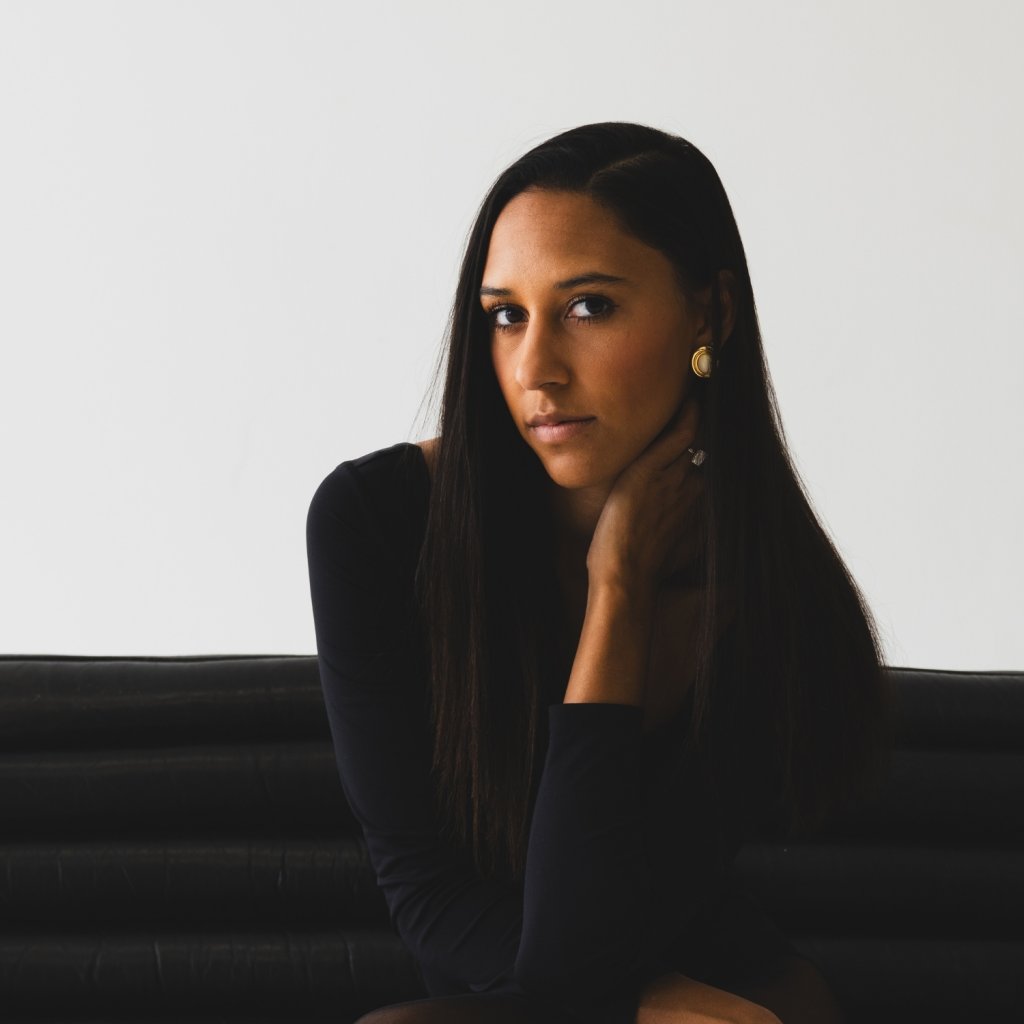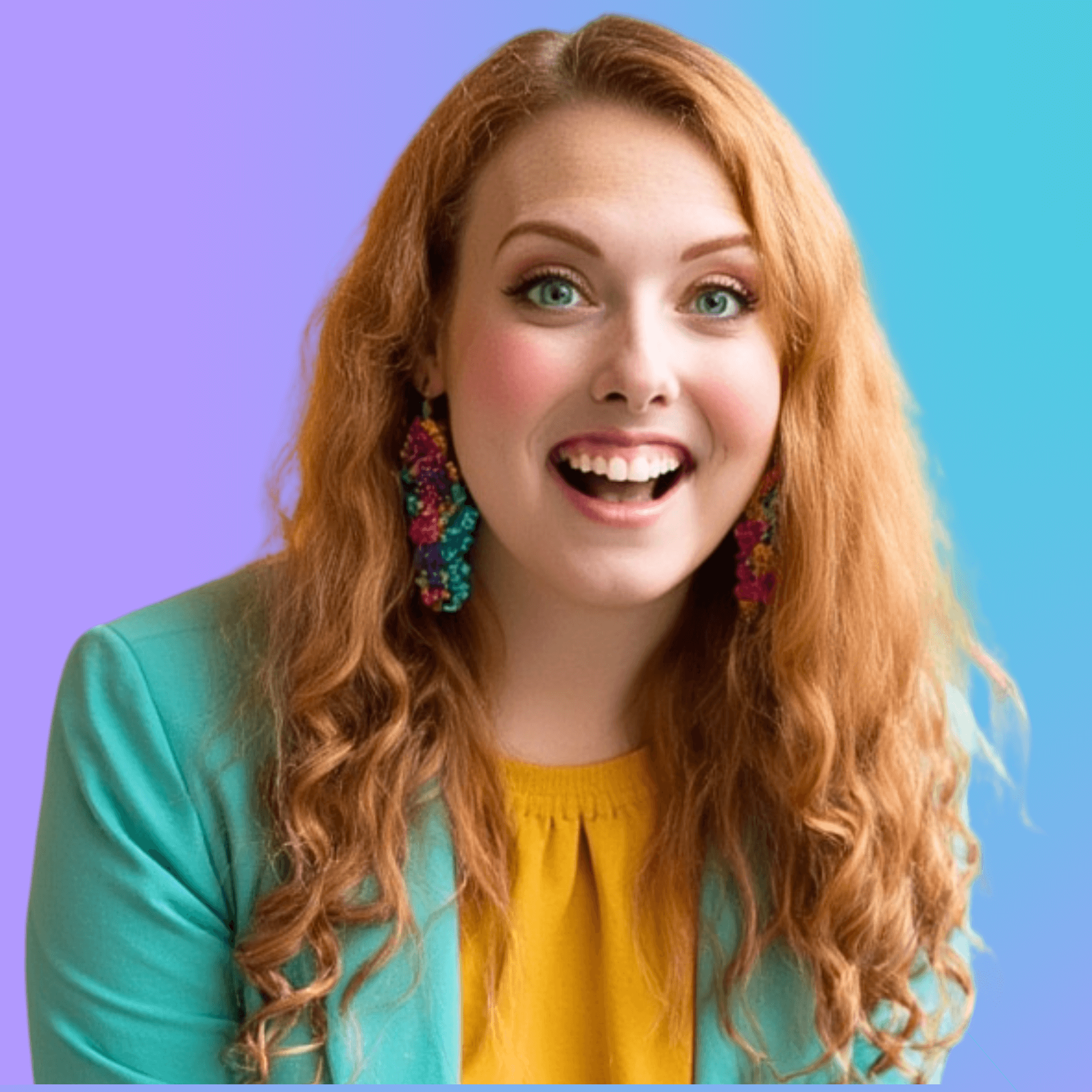Sometimes there’s a reason to do things the way everyone else in your industry has always done them — and sometimes you have to do it your own way. The real work is figuring out which way will actually sustain you in the long run. That’s what drew me to this conversation with Lyrik Fryer, co-founder of WorkPlay Branding, a 7-figure visual marketing company that has built something completely different from anything else in its space. Lyrik took the traditional project-based photography model — where clients hire you once, get a transformation, and move on — and turned it into a recurring, year-long, high-ticket membership that delivers quarterly creative campaigns.
She’s still in her twenties, she travels constantly, and she’s scaled her team across every major U.S. city, plus Canada, Europe, and Australia — but what makes her story compelling isn’t just the growth. It’s the intelligence behind how she built it: a company designed to support the creative process while also being operationally sounds and highly profitable.
LISTEN ON APPLE • LISTEN ON SPOTIFY
What’s inside:
- Why Lyrik stopped chasing $6K projects — and how it gave her a seven-figure business that also regulated her nervous system
- Lyrik’s rule and financial threshold that keeps profit margins tight
- The #1 thing she swears by for running a thriving business and managing a team
- Why she thinks creatives need to stop hiding from numbers — and the straight-shooting pep talk she gives to anyone who does
- The trade-off between instant cash and recurring revenue — and why patience paid off
- What Lyrik looked at to flip her revenue model then turn it into a global operation
Rather watch than listen? I gotchu!
The 7-Figure Vision Behind WorkPlay Branding
When I first asked Lyrik to introduce herself, she didn’t lead with numbers or titles — she led with the joy of building. She told me, “I’ve always loved the act of exchanging a product or service for money and then using that money as a resource in my own life.” That curiosity about how business works — not just how creativity looks — has been there since the beginning.
She grew up obsessed with both creation and commerce. Photography was a passion, but business was the game. In college, she even launched an iPhone case company just to understand what it meant to turn an idea into income. So when the opportunity came to co-found WorkPlay Branding right after graduation, she was all in.
At the time, she was living in Miami, bartending to pay rent, and building the company at night — a story that will sound familiar to anyone who’s ever had to create before they could afford to. Within nine months, she quit her job and went full time, spending the next seven years transforming that leap of faith into a seven-figure brand.
What makes her story stand out really is the intention behind it.
From day one, Lyrik built every part of the business with nervous system regulation in mind. (Can I get an amen?!)
Reinventing the Service Model
When Lyrik first started WorkPlay, the business looked a lot like every other creative service company — clients hired them for one big project, got their deliverables, and that was it. But that kind of model didn’t feel sustainable. She told me, “In my own nervous system, that doesn’t feel safe. What feels safe is having recurring revenue coming in every single month.”
That simple truth became the foundation of a seven-figure model. Instead of chasing new projects each month, she built a system that ensured predictable income while still giving clients powerful results.
Turning One-Time Projects into a Membership
In the photography world, most service providers operate project-to-project. Someone books a shoot, pays, receives their gallery, and leaves — which means the creator starts every month from zero. Lyrik flipped that script by introducing a high-ticket yearly membership with quarterly brand campaigns. Clients commit for an entire year, working through a repeatable three-phase process:
- Plan — a strategy session to map out one to three marketing projects for the upcoming quarter
- Create — a full-day shoot that brings those projects to life
- Launch — implementation support to make sure that content is actually used effectively across platforms
This cycle repeats every quarter, creating a steady rhythm of collaboration — and recurring revenue.
Why this Model Works
Lyrik’s model solves three problems most creative businesses struggle with:
- Predictability — no more guessing how much money is coming in next month
- Accountability — clients stay on track with fresh content and consistent marketing
- Profitability — the company grows without constantly chasing new sales
It also speaks directly to the type of entrepreneur who values consistency as much as creativity. Her clients know they’re investing in a system that supports their brand’s evolution over time.
That’s how WorkPlay Branding moved from a side hustle in Miami to a globally recognized, seven-figure company — not by doing more, but by structuring better… and honestly, smarter.
Lyrik didn’t want to chase unpredictable projects or live month-to-month wondering where the next client would come from. She wanted to create stability, safety, and sustainability — not just for herself, but for her team and clients.
WorkPlay Branding became that structure. It’s a visual marketing company that plans, creates, and launches quarterly campaigns for entrepreneurs, giving them both the strategy and the creative assets they need to stay visible all year long. And it’s built around one core idea: that the creative process functions best when the business behind it is steady.
The Structure of a Scalable 7-Figure Business
What makes Lyrik’s model so compelling is the infrastructure behind it. (That might not sound sexy, but stick with me here.)
Most people see Lyrik’s highlight reel: the polished visuals, the global travel, the creative team spread across continents. What they don’t see is the operational backbone that makes it all possible.
From the very beginning, every part of WorkPlay Branding was documented. “I don’t care if it’s how to make a Google Calendar invite,” she told me. “I want you to do it a certain way so that when I delegate it, I know it’s being done the way I would have done it.” That mindset — documenting every action as a system — is how she’s been able to stay in the visionary role while the business runs without her needing to be everywhere at once.
The Power of Systems and SOPs
When you build a company that scales beyond you, you stop relying on memory and start relying on structure. Lyrik didn’t wait until her business got big to create systems — she built them brick by brick from the start. Every time a process repeated more than once, it got standardized.
That decision turned her creative business into an operational machine. Each member of her team knows exactly what to do, how to do it, and when it needs to happen. It’s not about micromanaging — it’s about clarity. That clarity gives her the freedom to focus on leadership, innovation, and expansion rather than logistics.
A Team Built to Scale
WorkPlay now operates with a full team of creative directors, photographers, content creators, and social media managers, with infrastructure that reaches every major U.S. city — plus Europe, Canada, and Australia. Each client is paired with a creative director who oversees their quarterly campaigns from planning through launch, while the rest of the team executes each phase seamlessly.
Every role connects to a documented system, every system ties to a metric, and every metric rolls up to the company’s larger goal: scalability without burnout.
How the Methodology Scales
The simplicity of their process — Plan, Create, Launch — makes it easy to replicate. It’s one transformation delivered repeatedly, rather than reinventing the wheel for every client. That repeatability is what allows the company to scale globally without sacrificing quality.
By stripping down to the essential steps that actually create results, WorkPlay Branding built a framework that can serve hundreds of clients with consistency, creativity, and stability — the holy trinity of any seven-figure business that’s designed to last long term.
The Anti-Hustle Business with Financial Systems and Sustainability
There’s a point in every growing business where you realize passion alone doesn’t pay the bills — systems is what makes everything work. Lyrik learned that early. When WorkPlay first started, the focus was on getting clients and delivering exceptional work. But as demand grew, so did the pressure. “I didn’t want to have to think about how much money was coming in any given month,” she said. “I wanted to feel safe in my business.”
That word — safe — became her north star. It’s why she traded project-based work for a recurring model that created consistent cash flow. The switch wasn’t about scaling faster; it was about scaling sustainably.
Why Predictable Revenue Matters
Most creative businesses live in feast-or-famine cycles. One month is booming, the next is quiet. That unpredictability doesn’t just strain your finances — it taxes your nervous system. By turning her offer into a membership priced at $497 per month, Lyrik built a foundation that made revenue reliable.
Instead of waiting for big cash infusions from one-off projects, WorkPlay now collects steady payments across the year. And while that meant letting go of $6,000 upfront project payments, it gave the company something far more valuable — long-term visibility into cash flow. That stability created the breathing room to plan, hire, and grow deliberately.
The 50% Operational Margin Rule
Lyrik runs her company like a true CEO, not just a creative — though she says she identifies much more so as such. She tracks her operational margin — the percentage of revenue spent on salaries, contractors, and tools — and refuses to let it rise above 50%. “If our operational costs go over that number, it’s a no,” she said. “That’s the line between sustainable and stressful.”
Every financial decision runs through that lens — raises, tech upgrades, new hires, even marketing experiments. By holding the line at a 50% operating cost, WorkPlay stays profitable no matter how big it grows.
Learning to Love the Numbers
When we talked about the financial side of scaling, she laughed and said, “I’m a creative person, not a logical person.” But her discipline around numbers tells a different story. She built her own system for understanding the data — breaking operational costs into categories, assigning percentages to each, and tracking them monthly.
It’s not the kind of thing most creatives find exciting, but it’s the difference between a seven-figure dream and a seven-figure business that actually runs. “You can hire a CFO,” she said, “but you still need a fundamental understanding of your numbers. You’re the visionary — you have to know what the data means for your direction.”
Scaling Without Breaking: The 3x Capacity Rule
Every founder hits a moment where growth sounds exciting… until they realize their systems can’t actually handle it. For Lyrik, scaling WorkPlay wasn’t as much about getting more clients as it was about making sure the business could expand without collapsing under its own weight.
She has a simple test for that. When setting a revenue goal, she multiplies it by three and asks one question: Could our systems handle it?
“If my target monthly recurring revenue is $50,000,” she explained, “that might mean ten new clients. So I multiply it by three — what happens if thirty clients came through tomorrow? Would our systems break?”
That single exercise reveals exactly where the cracks are hiding — whether in team capacity, onboarding processes, communication flow, or delivery timelines.
The 3x Framework for Sustainable Scaling
Lyrik’s 3x rule is deceptively simple, but it’s one of the smartest operational habits I’ve ever heard from a creative founder.
- Step 1: Set your revenue goal and calculate how many clients it would take to reach it
- Step 2: Multiply both numbers by three
- Step 3: Audit your systems — where would things start breaking if growth tripled overnight?
That’s where your next system or hire belongs.
When she started applying this framework, it changed how she made decisions. Instead of reacting to problems as they appeared, she built proactively. “I stopped building for the business I had,” she told me. “I started building for the business that was coming.”
So many entrepreneurs think scaling means piling more on top of what already exists — more offers, more clients, more revenue. But Lyrik’s approach flips that logic. It’s not about adding complexity; it’s about anticipating capacity.
If your systems can comfortably hold three times your current volume, growth becomes smooth instead of stressful. Hiring becomes strategic instead of urgent. You stop sprinting from one client emergency to the next and start operating like a true CEO — someone who’s always building one level above where they are.
System Capacity Is the Real Growth Metric
Revenue is easy to track. Operational capacity is harder — but it’s what actually determines whether your business can sustain success.
“Most people don’t realize they’re already at full capacity,” Lyrik said. “They think more clients will solve their problems, but if your systems can’t handle the ones you have now, scaling will only magnify the mess.”
Her rule of thumb comes back to that 3x rule: if your business can’t handle three times its current workload without breaking, it’s not scalable yet. Fix that first.
Team, Leadership, and the Human Side of Scaling
When Lyrik talks about her team, it’s with the same reverence most people reserve for their first big client. “It doesn’t work without the three of us,” she said — referring to herself, her co-founder, and their COO.
From day one, they each played a different role: the creative visionary, the operational mind, and the structural glue that holds it together. Having a COO from the very beginning was a bold move — one most small businesses can’t imagine. But it was essential to scaling past the limitations of a solo founder. “We all stopped taking paychecks at first,” she told me. “We were building the foundation that would eventually support everything else.”
More than being willing to opt out of a paycheck (temporarily), this dynamic is relational. “It’s not always 50/50,” she said. “Sometimes one of us is putting in more than the other, depending on what season of life we’re in. We give each other space and grace to make that work.”
That level of emotional maturity is part of what allows the company to operate with such alignment. They can disagree, debate, and still move forward because everyone’s anchored to the same mission. When your leadership is rooted in trust rather than ego, decisions get sharper and scaling gets simpler.
Hiring People Who Don’t Need to Be Managed
WorkPlay’s internal structure mirrors its philosophy of autonomy. Every team member — from creative directors to social media managers — is performance-based. That means no one has to be micromanaged, because every role is tied to specific metrics and outcomes. “When your team is performance-driven, they manage themselves,” Lyrik said.
That approach requires discernment in hiring. It’s not about finding people who can do the job; it’s about finding people who can own the job. That distinction is why WorkPlay can scale across time zones without compromising the client experience.
Managing Humans, Not Just Systems
Lyrik is quick to admit that leading a team this large is its own full-time job — and not everyone wants that. “Managing people is a skill,” she told me. “You have to understand how humans work before you try to lead them.”
She’s learned to think of her team like a living system — one that needs clarity, structure, and support to thrive. The same way she builds processes for clients, she builds frameworks for her team to operate independently, creating a culture of ownership rather than oversight.
And part of what she learned is that while scaling to 7-figures required better systems, it also required better people — and leadership that could grow alongside them.
What Scaling a 7-Figure Business Actually Gave Her
When you talk to founders who’ve crossed the seven-figure line, you can usually feel one of two energies — exhaustion or expansion. Lyrik radiates the latter.
Yes, WorkPlay Branding is a 7-figure company now, with a team spread across multiple countries and a client base that renews year after year. But when I asked her what the business had given her, she didn’t start with money. She started with confidence. “I’ve failed so many times building this,” she said. “But every time I did, I learned that I could figure it out. That built the kind of trust in myself that no business coach ever could.
That confidence has become the through-line of her life — in business and beyond it. Because the company runs on systems instead of stress, she has the space to travel, think, and create from a place of genuine inspiration. “I don’t have to be at my desk every day,” she told me. “I’m there because I want to be, not because I have to be.”
That’s what sustainable scaling looks like — not passive income or overnight wins, but the ability to choose where your energy goes. The ability to build a business that fuels your life instead of consuming it.
The Emotional ROI of Systems
When you look at the way she’s built WorkPlay, it’s easy to think of systems as spreadsheets and SOPs. But what she’s really built are emotional guardrails — structures that protect creativity. Predictable revenue, clear delegation, and financial margins aren’t just business strategies; they’re forms of nervous system regulation.
All of the operational infrastructure and the systems was the stuff a lot of entrepreneurs find to be the “un fun” stuff — but it’s what made it safe for Lyrik to dream bigger.
Lessons for Founders Who Want to Scale Smart
By the time we wrapped our conversation, I realized that everything Lyrik had built — the systems, the margins, the 7-figure structure — came down to one thing: radical responsibility. She doesn’t romanticize scaling. She treats it like an equation — one that demands clarity, intention, and accountability at every step.
These are the biggest takeaways:
1. Systems Are the Love Language of Sustainability
Lyrik is the kind of creative who will tell you flat out: if your business feels messy, it’s because your systems are missing. “If you’re overworked,” she said, “you probably don’t have systems around your time or your process.”
She’s right. Every frustration in business traces back to one missing structure — something undocumented, unassigned, or undefined. And fixing it isn’t glamorous work; it’s the slow, deliberate building of order so that your energy can be used for vision, not firefighting.
Her advice? Start small. Systemize everything, even the most minute actions — how you onboard clients, how you schedule calls, how you deliver final assets. Those micro-decisions are what free you up to think big. “Don’t be afraid to be in the weeds,” she told me. “That’s how you learn what needs a system in the first place.”
2. Simple Scales, Complicated Fails
One of the smartest things Lyrik said in our conversation was, “If your systems can’t handle three times your current workload, you’re not scalable yet.” And you can’t make something scalable when you’re trying complicate TF out of it 😅
The goal of scaling isn’t to build more; it’s to make what you already have work better. It’s simplifying until the process becomes replicable — until it can run without your daily involvement. She calls it trimming the fat: removing the extra steps that don’t move the needle and doubling down on the ones that do.
That’s how WorkPlay Branding can manage hundreds of clients across multiple continents without losing quality… or their sanity. The systems are simple, the expectations are clear, and the business can flex with whatever growth comes next.
Radical Accountability Over Romanticized Hustle
Lyrik’s version of scaling has nothing to do with grinding harder or chasing vanity metrics. It’s about ownership — of your time, your numbers, your team, and your choices. “You chose to be a business owner,” she said. “That means you have to know how your business works.”
It’s not the sexy advice people want to hear, but it’s the truth every founder needs to internalize. Scaling a seven-figure business doesn’t happen because you get lucky or go viral. It happens because you get systems. Because you track margins. Because you treat your business like the living organism it is — one that thrives when you care for it properly.
Building a Business That Can Breathe
The more we talked, the clearer it became that Lyrik’s version of success is about having a breathing one. And like she said, one that keeps your nervous system regulated. A business that moves with you instead of against you. One that expands without demanding your entire nervous system as collateral.
When most people imagine scaling a seven-figure business, they picture long nights, nonstop launches, and a calendar that never lets up. But what Lyrik built at WorkPlay Branding is proof that scaling doesn’t have to mean strain. It can mean space — for better decisions, deeper creativity, and an actual life.
Because scaling, at its best, isn’t about growing more. It’s about growing better. It’s the difference between chasing momentum and designing it. Between building a business that looks successful, and one that feels sustainable.
And that’s the lesson I hope you take from her story — not just that she scaled a seven-figure company in her twenties, or that she’s operating in multiple countries, or that she did it with a small, high-performing team. It’s that she built a structure that supports her vision instead of suffocating it.
So if you’re sitting at your desk wondering how to grow without burning out, start there.
Build systems that feel steady. Track numbers that tell the truth. Design operations that can hold your biggest vision — and then let the rest breathe.
That’s how you scale a 7-figure business — not by doing more, but by creating something strong enough, simple enough, and sustainable enough to grow with you.
. . . . . . .

Lyrik Fryer is the co-founder of WorkPlay Branding, a tech-enabled creative production company redefining how brands scale their visual presence. With a background in PR and advertising, she has led creative campaigns and produced content for major brands and entrepreneurs including Target, Kajabi, Kate Northrup, Selena Soo, Jordan Gill, and Ellen Yin. Through WorkPlay’s signature WorkPlay Method™, she has helped businesses drive six- and seven-figure launches while building world-class creative ecosystems.
Her expertise has been featured in Business Insider, where she shared her vision for merging luxury-level creative direction with technology to democratize high-impact branding for entrepreneurs and enterprises alike. Beyond WorkPlay, Lyrik is also the founder of Gloss Up, a beauty brand merging modern luxury with community-driven storytelling. Known for blending strategy, storytelling, and aesthetics, she continues to scale creative platforms that empower both brands and the next generation of creatives worldwide.
Connect with Lyrik:
- On Instagram @workplaybranding
- Connect with Lyrik on Instagram directly @lyrik.fryer
- On the web at workplaybranding.com
- Book a call for your business branding!



